小倉から長崎まで続く長崎街道。大村はかつて宿場町でした。
長崎街道は様々な人や物が通った道です。象まで歩いて通った記録もあるそうです。
時には旅人は日記をつけます。
日記によると 評判の良い宿場町と悪いのがあって あの町は道の脇にきれいに木が植えてあってよいとか 美人が多いとか ある宿場のあたりはなんだかいつもきたないので 泊まりたくないとか。
大村藩はそんな人々の”評判”を気にしました。
かつては大村藩の人々全てがキリシタンでした。禁教後は大村藩は仏教を信仰する藩として生まれ変わらなければ 藩は取り潰されます。ささいな理由で頻繁に取り潰しが行われていた江戸時代、実際 大村藩はいつ取り潰されてもおかしくない状況だったはずです。
街道を行く人々に ”大村藩は他の藩と同じく仏教を信仰する町で しかも美しい町である。” という良い印象を与えたかった。それはきっと うわさとなって幕府の耳にも届くはず。
大村藩の人々は考えました。
”街道のお掃除をちゃんとして清潔にするのはもちろんだけど 屋敷の塀を色とりどりの五色の石でつくったらきれいじゃない?きっと評判になるよ!”
写真は大村特有の”五色塀”です。
塀はその頃のものではありませんが きれいですよね?
The Nagasaki-Kaido, from Nagasaki to Kokura, was part of the trunk road that leads to Edo ( Tokyo ) from Nagasaki. Omura is beside the Nagasaki-Kaido, one of the towns where people take a rest at cafes or stay at hotels in the night. It is said that numerous people with a load passed by there and some people even saw an elephant walking on the road to Nagasaki or to Edo. Nowadays, we learn a great deal from the diaries that such tourists kept about 400 years ago. If you read the journals you'll find many compliments or complaints about the towns that they left. One traveler liked to see stunning rows of trees beside the road, and one was pleased to find there were many beautiful women in one town. One tourist hated one somehow messy town.
Omura was a town which was keenly concerned about such reputation. There was a reason. In the Edo period, when the government smelled out any resistance, no matter how much tiny and insignificant it looks, didn't hesitate to destroy the clan and take away its land. The Omura clan had owned the land for a long time, which had been very famous town due to the fact that all of people once were Christian. After Edo-government banned Japanese people to believe in Christianity, no one could exist in Japan as a Christian. Thus, Omura people was desperate to give travelers the new and good impression of this town so that they could survive. They wanted to show tourists "Omura town is no longer Christian one. All of us are earnest Buddhists. Our town is beautiful and people are totally innocent." But, how? I assume that people in Omura must have mulled over how to show a good town, Omura.
The picture is part of walls in Omura City. This is called like "Five-color Walls". Those unique walls were placed in Omura town along the Nagasaki-kaido to represent a refined sense of taste that Omura people have.
1608年 日蓮宗の本経寺は建立されました。
それまで大村には寺や神社はありませんでした。キリシタンにひとつ残らず破壊されてしまったからです。大村の殿様 大村喜前は お友達大名 熊本の加藤清正にいろいろ教えてもらってこの寺を建てました。
その頃はまだ キリシタン弾圧がまだ さほど激しくなかったのに 教会を取り壊した跡地にわざわざ建てています。キリスト教の”キ”の字も残してはならない という決意でしょうか。
ところで お寺の屋根をよく見てください。中心がずれてませんか?移築された建物にしばしば見られるらしいので このお寺は移動して運ばれてきたのかもしれません。 230年前に一度焼失しているので。 本堂に続く石畳は約400年前そのままです。
In 1608, Honkyoji-temple was built in Omura as a Nichiren sect temple. Back then, there was no temple or shrine around there. Of course there used to be but Christian totally demolished all of them. Now, Omura needed to have Buddhist things immediately, the Omura feudal lord, Yoshiaki Omura, asked his friend, the famous Kumamoto feudal lord, Kiyomasa Kato, for a helping hand. Kato send him some experienced Buddhist monks. The Omura feudal lord intentionally built the Honkyoji-temple on the place where a church used to be. I feel Yoshiaki's strong will: "Now look at my people , all of them in Omura are no longer Christian. We all have revived as Buddhist."
BTW, please take a look at the roof of the temple. Do you find the center of the roof should be a bit more rightward? In other words, the centers of the roof and the foyer look different. A history instructor of mine said it's not that rare phenomenon. It often occurred when the temple was moved from somewhere to the other place. Given the original temple was burned down 230 years ago, this sort of new temple must have been brought here from somewhere. If you get a chance to look at whatever temples, watch the roof! Just for the record, I have never found such a kind of strange roof before.
The stone path forward has been there for some 400 years.
本経寺の百間塀が街道にそって長く続きます。
”りっぱな お寺だ。” そう旅人に思ってほしかったのでしょう。
This is a long fence of the Honkyoji-temple, called like "A hundred-ken fence". A ken is 1.818 meters. The road is just part of the Nagasaki-kaido. The Honkyoji-temple is not that big temple but the fence is oddly long. Probably Omura expected tourists to find that this town has a great temple.
本経寺の塀の外を普通に歩いているだけでたくさんの墓石が見えます。
様々な形の美しい石造美術品のようです。大村は石がたくさんとれて それを加工する技術にも優れていました。五輪塔、笠塔婆といわれる石を積み上げた塔のような形の墓石が多く見られます。驚くのはその大きさ。2~7メートルまであります。
江戸幕府が段階的に進めていた鎖国が完成し 長崎から小倉までをむすぶ長崎街道が整備された時期に墓石の大きさはそれまでの2倍、6メートルに達します。
やはり 街道をゆく旅人へのアピールです。
”大村藩は仏教を厚く信仰する藩で こんなに立派な墓を建てるのだ。だから どうぞ キリシタンの藩というイメージはもう忘れてください。”
個人的には 街道に配した五色塀、巨大な墓石や ただ長い壁は、パッとしないアイデアだなと思います。
五色塀などは 正直言うと垢抜けない感じが 私は好きではありません。
でも 勝手な想像ですが だからこそ きっとお城の中でセンスのないオヤジ達(失礼!)がおでこをくっつけて 一生懸命に考えたに違いない・・・と思えるのです。
小さく貧しい大村藩。でも全ては藩として生き延びるために。みんなで知恵を出し合ってがんばったのです。
私はもともと歴史には全く興味なかったけど なぜか長崎、大村の歴史はとても面白い。
If you just walk along the fence, you will see many tall gravestones above it. Omura was a good source of stones. It is said that there used to be many professional stone artisans. If you get inside of the Hongyo-ji, you'll see many stunning tombstones that are beautiful and some of them are really big. The shapes are unique, they are categorized into "The five-story pagoda" and "The stupa". I think the standard shape of common headstones is just rectangle. Maybe I should've taken some photos of them but I was just scared in the graveyard.
As you know, during from 17th to middle 19th, the Edo-government had been under an unique diplomatic maneuver dubbed "Sakoku". Japan shut out all of the foreign counties besides China and Holland. The Nagasaki port was the only place in Japan to trade with them. As Sakoku proceeded, Nagasaki-kaido was needed to be completed as a trunk line to Edo. And at the same time the height of the tombstones in the Honkyoji-temple gets nearly 6 meters so that many tourists can see it above the fence. The six-meter gravestone is twice as tall as ordinary ones. As you can see, Omura fudal lord had been craving for a nation-wide recognition of the new Buddhist Omura in order to survive with his people.
Well, personally I don't buy the idea of so to speak "The five-color wall". I can't take it they are beautiful. I mean they are not my cup of tea. How about way too tall headstones and too long fence? Gee, I don't know...no offence, but I think they are cheesy and tatty ideas as such. Whereas I like them. What with the poor ideas inspire me to imagine that perhaps, in the Omura castle, unrefined vassals had meetings day in and day out to work out how to survive and ended up making such poor stuff. Turned out the ideas did work. Some tourists wrote about the beautiful walls or neat and nice Omura in their diaries. I like Omura people struggling to survive. The feudal lord, his vassals and his people corresponded to get over the crisis that might have destroyed the Omura clan.
I don't call myself a history person. I didn't like any history as a student because I didn't remember any numbers nor names ( even now ). Added to that, I don't read a book. It's surprising and I don't know why but the history of Omura and Nagasaki is very interesting for me.













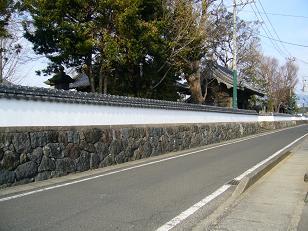

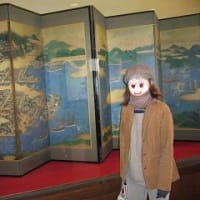
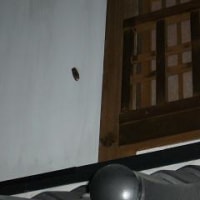
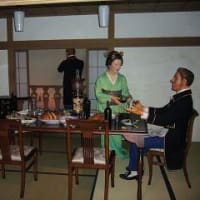
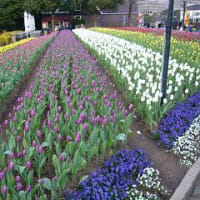
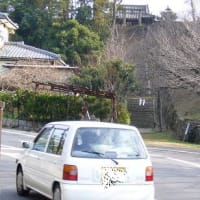
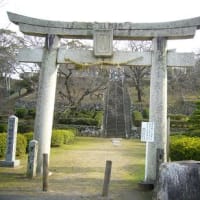
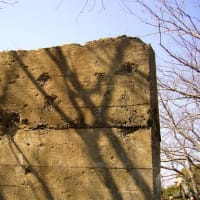
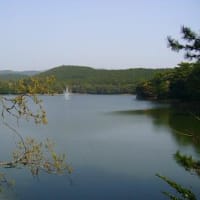
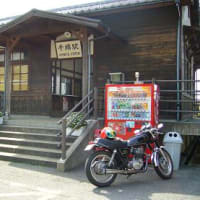
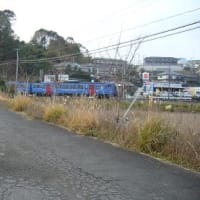
The book says that in the Nagasaki-kaido, only the way between the Matsumara stage and the Sonogi stage(it's actually in current Higashisonogi) goes along the bay.
In Higashisonogi, I think part of the trunk road is fairly close to the expressway, the Higashisonogi exit.
And, yes you are right. The north closest town of Omura is Higashisonogi. Probably Matsubara has belonged to Omura for a long time at least since before the Edo era, I think. On the trunk road, the Nagasaki-kaido, the north next stage of the Omura stage was the Matsubara stage, the next was the Chiwata stage and the next stage was the Sonogi. Each of the distance was about 5 or so miles...(Did I mention that I'm pretty bad at number?)
Ello, I'm just amazed by that you really know about here! Higashisonogi County is right next to Omura City. That's the same as America, the limits are just bordered right next to each other. I think Japanese Prefecture means like American State. Japanese Prefecture has City and County that I don't see any difference between them.
Omura City is pretty small, you wouldn't take more than an hour to drive from the south to the north. Unlike a former place I once lived for a decade, I see many kids or youngsters here in Omura. People speak cute Nagsaki Japanese. I like here.
I'd be glad if this post could help you. Any question is welcome!
Yutanmom
I'm sorry to bother you with all of these questions. I hope you don't mind. It's just that you are the only one I've been in contact with who is actually in Omura and has an interest in history. I would be ever so grateful for any information you can give me.
Thank you so much!
Ell
Sorry for having you waiting. I'll translate it soon. (^^)/
Yes, you are right. Matsubara and the ryutosen are not that far from my place.
Maybe I can bike to Matsubara but I usually go there by car and it takes about 15 minutes.
I've heard of the name of "the ryutosen" in Higashisonogi as a good place to play in the water in summer, though, I've never been there. I've passed by that area with my car many times, it takes about 30 minutes from my place. Given there is not such a steep slope, maybe you can bike there but in that case, as the roads are relatively narrow, you'd better be careful about many cars passing by your bike.
I'll be in Omura City till late March, please let me know if you come!!
Yutanmom
This looks very interesting but I'm waiting for the English translation. No rush, just curious.
By the way, have you been to the ryutosen waterfalls near Higashisonogi? Are they close to you or far? I am under the impression that they are not too far away. Possibly you can bicycle to them from Matsubara? Or am I wrong? I am writing about the waterfalls there. I found a lot of information about them, but it is hard to gage distance when I am so far away! One day I will come to visit.
Ell